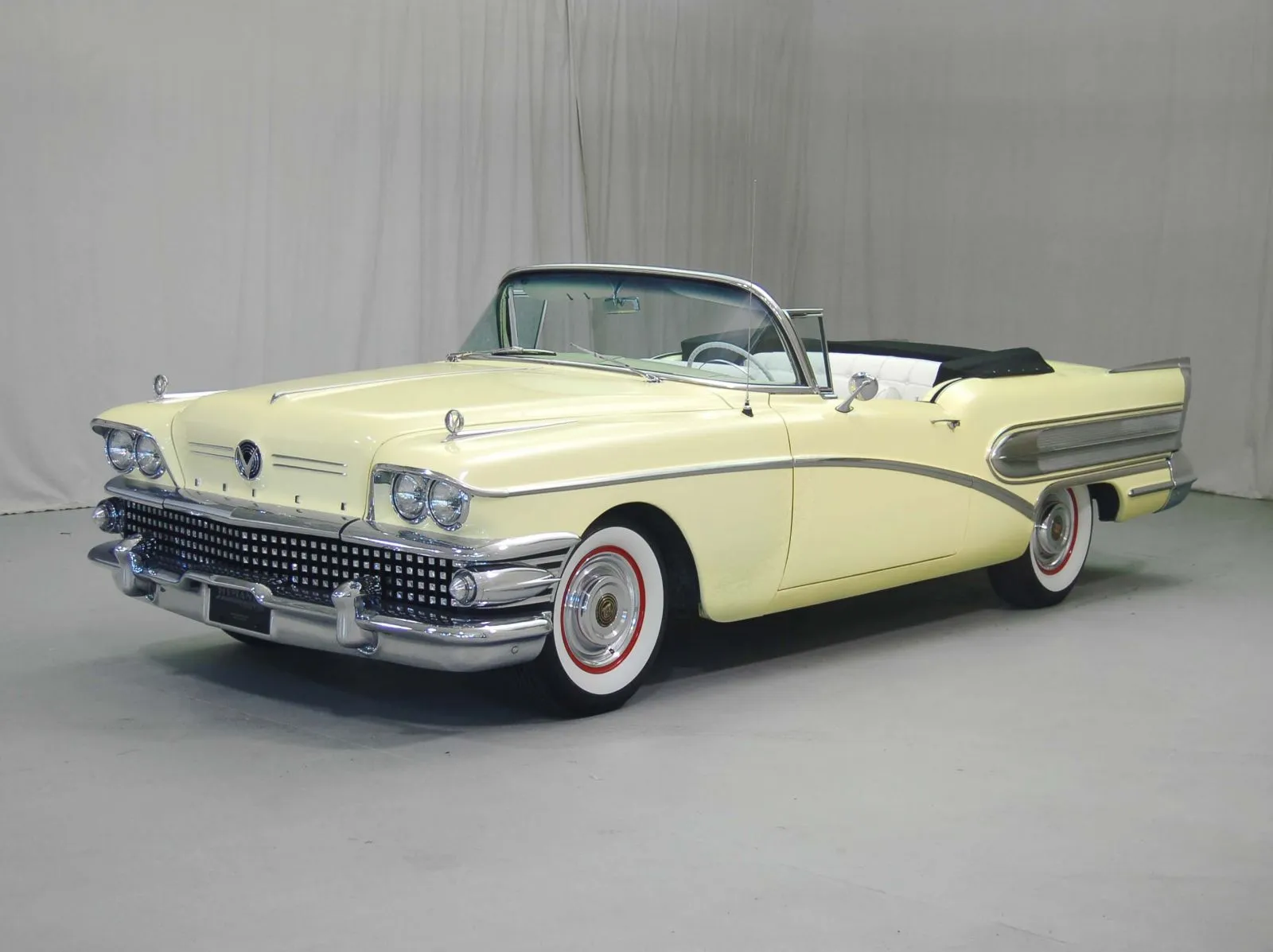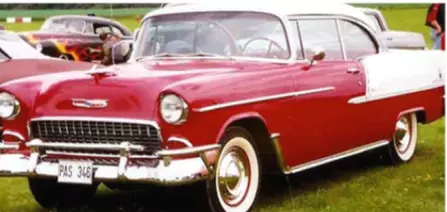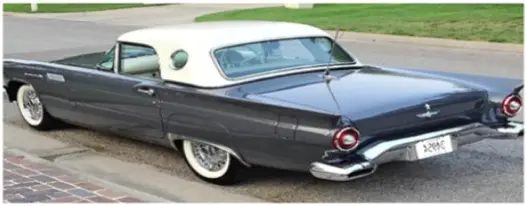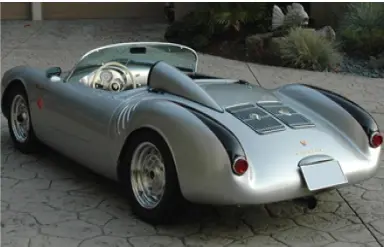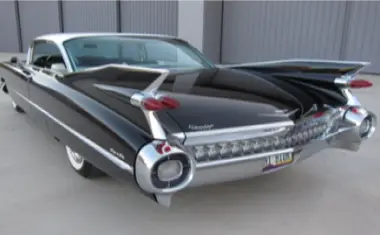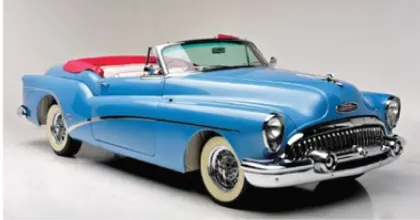What is your car for you? Is it just a vehicle to travel, or it’s a sign of sophistication for you? Well, your car is going to say about it and your taste for cars. But do you know 1950s cars have been treated like something royal since they created these?
Various automobiles worldwide have come up with amazing designs with extraordinary performances. During the 1950s, a bunch of cars was gifted to us. So, if you have a fascination with these amazing cars and want to know more, you are in the right place.
As we will talk about all the 1950s cars in the following section. So, pick your notepad, and let’s get started.
Cars in 1950
For the second year, the American automotive industry set a new record for manufacturing in 1950. There were 7,987,000 automobiles produced in total in 1950.
The reintroduction of Regulation W, the government’s credit management law that restricted transactions during and soon after World War II became vehicle salespeople’s most major moment of the year.
In September, a less strict version of this control—requiring a one-third down payment and a 21-month payment period—was re-established. This was an extension of the wartime version by three months. In 1950, two companies released new “small” models to suit consumers’ needs for-
- An affordable second vehicle for middle-class households
- A vehicle whose sticker price made it affordable for many individuals who formerly had to purchase secondhand vehicles.
It was unclear how significant the demand was in any of these situations.
The “hardtop convertible,” launched in 1950 models, had been quite famous and extended for the 1951 model year. These vehicles had the attractive looks of a convertible while yet having a fixed steel top, while not being convertibles in the word’s traditional meaning. In 1951 models, this body type was expanded to accommodate four-door sedans. In 1951, around half of the vehicles had hardtop designs.
Since most companies had given their 1950 models a fresh style, the 1951 design diverged from 1950 in only a few additional ways. Most of the 1951 alterations were purely aesthetic. The number of automatic gearboxes offered and sold during 1950 increased dramatically. More than 1.5 million completely automated devices were reportedly created that year.
Cars in 1952
The 1952 steel strike that affected the entire country in June and July was one of several reasons that hampered the motor industry’s ability to produce. In 1952, work was still being done to increase defense production while keeping civilian output at a profitable level.
Many businesses focused up to 60% of their efforts on the defense industry, producing a wide range of military products in addition to airplanes and equipment, such as tactical vehicles, ammunition, tanks, and tank guns. The biggest manufacturing issue facing the sector was a lack of materials. In that order, the rarest materials were copper, steel, and aluminum.
There were at least three 1953 vehicles for which air conditioning was announced as an additional device. Five 1952 vehicles were equipped with power steering, first used in one 1951 car. Power braking was made available on two models in 1952 after being introduced in 1951.
One series of delivery vans now has automatic gearboxes. In 1952, new automobile prices increased, but tax increases were larger. By the middle of the year, it was estimated that $650, or almost a third, of the $2,000 spent on a new car went toward taxes.
The Packard Motor Automobile Company and the Buick Motor Division looked into the viability of mass-producing an American sports car. Both businesses displayed their renditions. Although neither model was intended for instant production, the manufacturers still displayed the sports cars to gauge public opinion and assess the potential size of the demand for such a vehicle.
Chevy also produced a sports vehicle idea that saw some popularity in the future. This new automobile was known as a Corvette. Many questioned if they would even produce a 1954 model.
Cars in 1953
After experiencing two years of scarcities and limitations, 1953 looked to be one of the finest years ever for the American automobile industry.
The government’s easing restrictions on steel, copper, and aluminum was one of the key causes of this industrial increase. A fire at GM’s Hydramatic facility in Livonia, Michigan, costing $70 million, was the sole significant production setback.
Despite improving significantly in 1953, there were still innovative techniques to construct automobile bodies. In 1953, two distinct automobiles were released: one had a magnesium body, and the other had a plastic-fiberglass body.
The 1954 models’ prices were not any different from those of the previous year’s models. Several substantial adjustments were made, even though there were no drastic stylistic alterations.
The ever-growing suburban and rural populations were cited as the reason for the station wagon’s rising notoriety. Station wagon output never exceeded 1% of all products before World War II, even though it had been around for more than 30 years.
The station wagons were built with sturdy steel hulls and the barest amount of opulent extras, keeping with the practical ethos of the post-war period. The 1954 models were improved to be safer, more affordable, and simpler to drive by research and design teams. Power steering was being installed in a lot of less expensive vehicles.
The “Autotronic-Eye,” a novel technology from GM, automatically dimmed the high lights as a car approached and raised them again after the incoming vehicle passed.
The automatic transmission gained more and more acceptance over the decades after World War II. In 1953, some automatic shift was included in more than half of all cars and trucks sold in the US.
Cars in 1957
The advent of the station wagon was one of 1957’s most notable developments. Before the war, this body type was considered a luxury fit for a rural home, a resort, or an occasional commercial place. But by 1957, it had established itself as a well-liked and practical family vehicle, accounting for more than 14% of new vehicle sales.
The popularity of automatics, power windows, power locks, power steering, power-adjustable front chairs, and air conditioning rose. Automated gearboxes were standard on more than 80% of 1958 models.
At this point, automakers decided against promoting horsepower as it had little to do with peak speed in reality. That has altered.
The US imported more vehicles than it exported for the first time. In terms of popularity, Volkswagen led all international automakers. The auto industry at the time envisioned a period when families would no longer be able to get by with just one vehicle, and individuals would instead purchase many vehicles for their various needs.
With their 1958 models, Chevrolet made significant improvements to the rear-end appearance. Ford supplied the affordable Edsel and a whole line of opulent Continental models. The body of the 1958 Oldsmobile was entirely redone.
A supermini named Bianchina was produced by the Italian automaker Autobianchi and had a 40 mpg fuel economy rating. The vehicle was unveiled at Milan’s Museum of Science and Technology on September 16, 1957.
Some of the Most Popular Cars of the 1950s
There are automobiles made every decade that are genuinely unique. Several cars every 10 years perfectly capture their time, whether it’s because of performance, svelte style, or pop-culture allure. This is also true of the 1950s.
1955 Chevrolet Bel Air
- The 1955 Bel Air was first displayed as an improvement above earlier models, being faster, sleeker, and more contemporary.
- It had a brand-new look that would become Chevy’s trademark in the future!
- The automobile had a redesigned wraparound windscreen and weighed roughly 3,150 lbs.
1957 Ford Thunderbird
- The Thunderbird’s automatic gearbox with overdrive provided superior fuel efficiency than other vehicles at the time.
- When this high-end sports automobile was first introduced in the 1950s, it cost over $4,000, but due to its popularity, costs eventually fell to about $3,400.
- It weighed roughly 3,850 pounds. It possessed a 12-gallon fuel tank.
- It had sharp angles and tailfins, which set it apart from other automobiles of the time in terms of appearance.
1955 Porsche 550 Spyder
- In the beginning, the Porsche 550 Spyder was created for racing.
- Its Type 550 chassis houses an engine identical to the double-overhead, four-camshaft engines used in Formula One vehicles.
- It appeared in several films, including the well-known ‘Rebel Without a Cause.’
1959 Cadillac Coupe de Ville
- Although it only weighed a little over 5,000 lbs., its engine provided it with a top fuel efficiency of 19 mpg.
- The Coupe de Ville had ‘tail fins,’ which were fashionable and frequently found on other automobiles of the time.
- Over the years, many famous people have driven this car, including Michael Jackson, Britney Spears, Elvis Presley, John Lennon, and many others!
1953 Buick Skylark
- The gasoline tank of this automobile, which weighed around 4,400 lbs., had a capacity of 30 gallons.
- It had wraparound windshields and sharp angles, which set it apart from other vehicles available on the market then. The design elements also gave it the appearance of a rocket ship from the future!
- The 50th-anniversary celebration for Buick included The Skylark.
1956 Chevrolet Corvette
- The Corvette was originally given a warship’s name.
- The 1956 Corvette only weighed roughly 2,980 lbs., which is significantly less than any of the other vintage cars on our list despite its strong performance capabilities!
- It could travel down the highway at up to 104 mph using its engine.
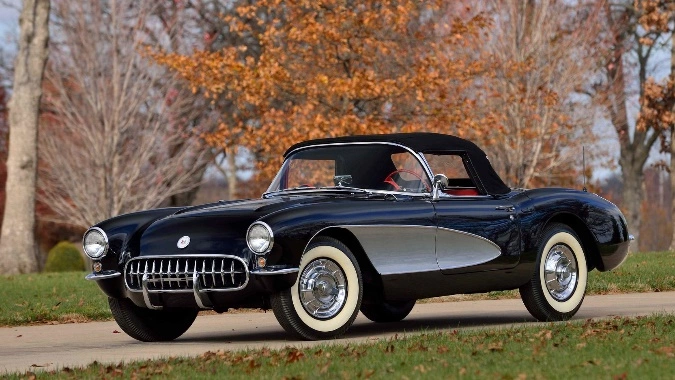
To Conclude
That’s all from the discussion regarding the 1950s cars.
Almost every car that was invented in that era was indeed a masterclass. From Chevrolet to Ford Thunderbird, Porshe, and many more, there are several on that list.
No wonder, after so many years of passage and new model discovery, people still adore them due to their unique design, robustness, and elegance.
